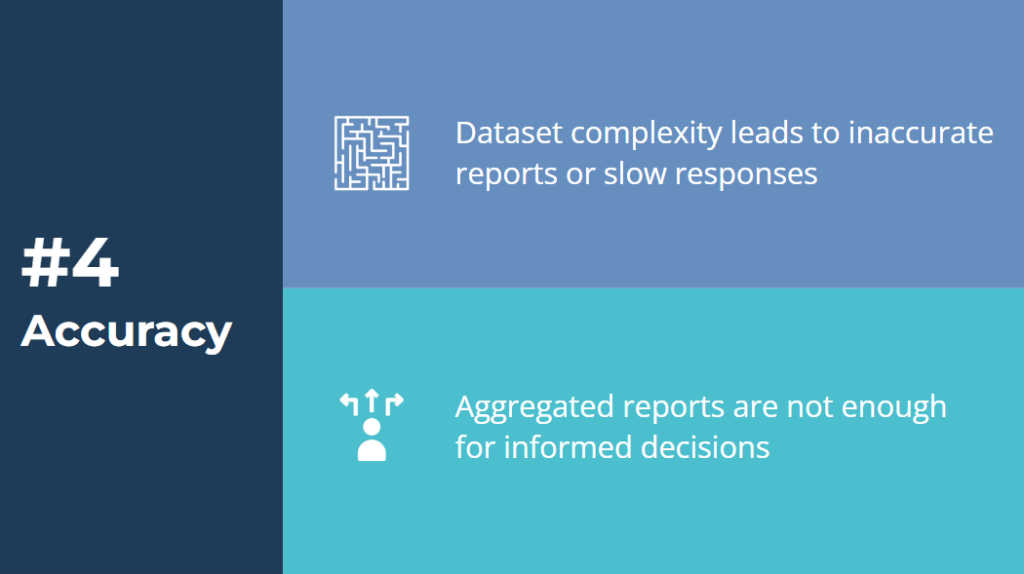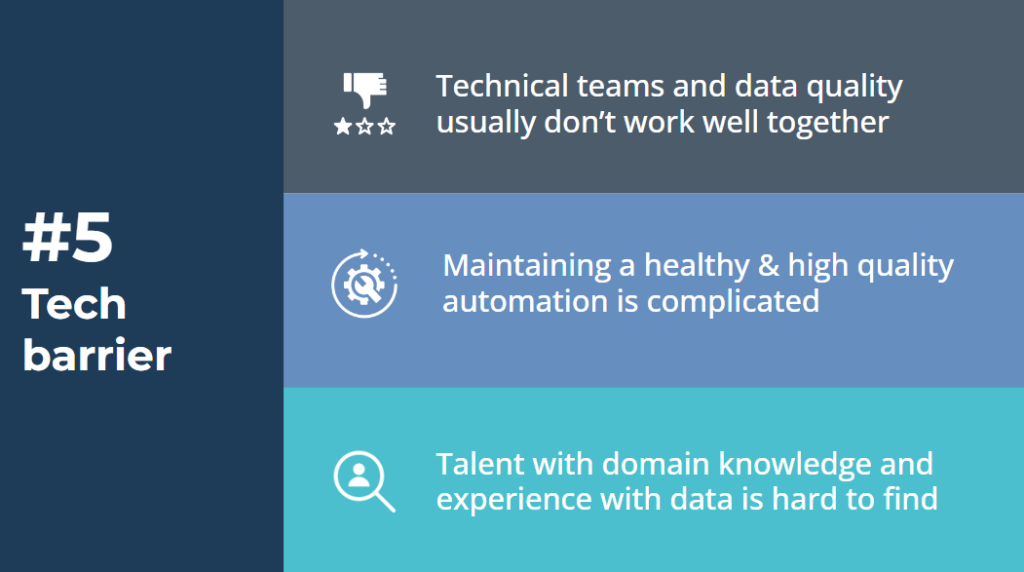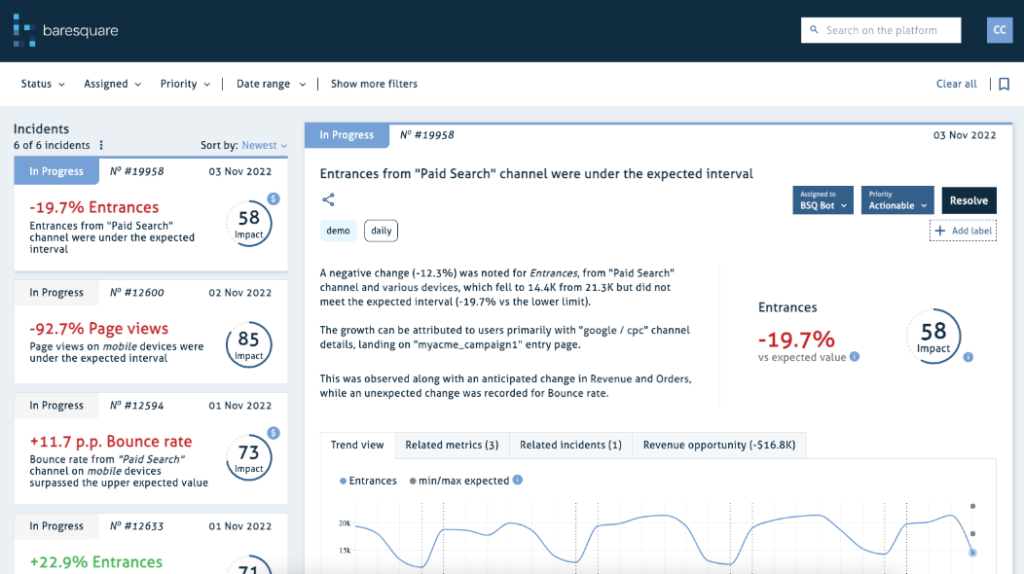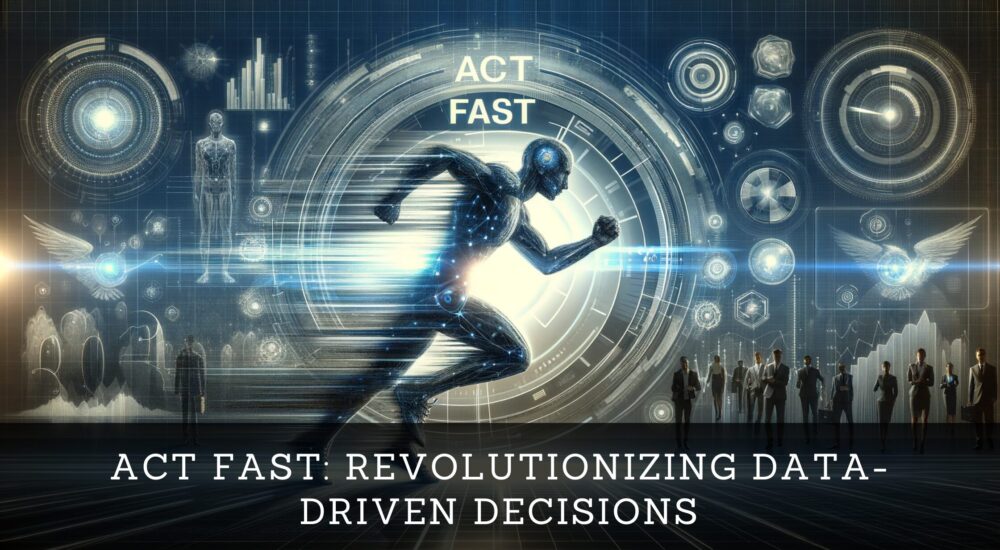Act Fast: Revolutionizing Data-Driven Decisions
In today’s swiftly evolving business world, agility and responsiveness are not just virtues but necessities. The secret to thriving in this landscape lies in how businesses harness and act to the vast ocean of data at their disposal. Imagine your business as a thermostat, proactively regulating its environment, as opposed to a thermometer, merely recording the temperature. Achieving this level of dynamic control demands a strategic embrace of automation. Without it, keeping pace with the fast and relentless speed of change is virtually impossible. In this exploration, we delve into the five critical barriers that often hinder businesses from reaching this pinnacle of data-driven maturity. Let’s embark on a journey to uncover these challenges and transform how your business interacts with data.

1. Scalability
In today’s digital era, data expands at an exponential rate. To manage this growth effectively, it’s essential to increase data processing capabilities without proportionally increasing human labor. This approach is crucial because data continuously accumulates, even during off-hours like weekends and holidays. Consider the scenario of an e-commerce platform witnessing a sudden traffic spike during a holiday sale.
The typical initial response for many businesses is to adopt rule-based automation. However, this method requires constant awareness and updating of the rules, which is not only challenging but also inefficient for scaling with complex and evolving datasets.
The key to overcoming scalability challenges lies in intelligent automation, capable of understanding and adapting to each unique dataset. Recognizing this challenge early simplifies future processes. Reflect on how thermostats function: they automate responses based on the environment. Achieving similar efficiency in data handling involves several steps:
- Automatically assign tasks, as indicated by data insights, to the appropriate stakeholders.
- Prioritize actions based on their urgency and importance.
- In case of urgent issues outside regular hours, notify stakeholders via phone calls.
- Summarize the findings in a concise, mobile-friendly format for quick and easy consumption.
Embracing these strategies ensures that businesses can scale their data processing efficiently, staying ahead in the fast-paced digital world.

2. Efficiency
Efficiency in data analysis is the gateway to swifter progress and the ability to allocate more resources for comprehensive reviews. Those experienced in data analysis understand that manual methods typically resort to averages, as it’s near impossible for humans to frequently analyze the finer details within extensive datasets. While averages can provide a simple summary of complex data, they can also distort reality, hiding important variations and nuances within the data.
However, the essence of efficiency transcends mere speed; it’s about liberating human talent for more creative and strategic endeavors. Automating routine data tasks empowers teams, particularly in Small and Medium Enterprises (SMEs), to channel their energies towards innovation rather than repetitive actions. This approach not only streamlines processes but also reduces reliance on individuals with hard-to-find specialized skills. In essence, automation in data handling is a leap towards more creative, less constrained, and strategically focused business practices.

3. Consistency
Consistency is the cornerstone of data-driven decision-making. Inconsistent analysis can be more detrimental than having no insights at all. In large organizations, it’s not uncommon to encounter varying results in data analysis, influenced by the analyst’s experience, perspective, or even their mood on a particular day. Our inherent biases can lead to fluctuating outcomes, as highlighted in the “Working with data is still full of human challenges” article, where an experiment with judges illustrates the significant impact of these biases.
While experienced analysts might sometimes turn these biases into advantages, more often than not, it’s a hurdle to objective decision-making.
The primary objective should be to minimize manual intervention in data analysis, thereby curtailing the risks of human error and bias. The next stride involves developing models that encapsulate the wisdom of seasoned analysts, effectively institutionalizing their knowledge. A practical starting point is to maintain a log of successful actions for past challenges and recommend these proven strategies for similar future situations. This approach not only standardizes the decision-making process but also paves the way for more consistent and reliable data-driven strategies within the organization.

4. Accuracy
Navigating the intricacies of complex datasets demands a high degree of accuracy. Crafting reports that are both precise and comprehensible is an art that requires specific skills. This challenge underscores the importance of automating the reporting process, making it less dependent on individual expertise. An effective automated system should incorporate extensive checks – such as contribution analysis, correlations with other metrics, and the impact on monetary values – to minimize the necessity of revisiting the dataset for verification.
It’s crucial to recognize that datasets are inherently imperfect and rarely pristine. Prioritizing recent data helps bypass the complexities of extensive data cleansing. In most scenarios, robust and detailed analyses can be conducted using just the latest data, typically from the past 30 to 60 days. This strategy ensures that decision-making is grounded in the most current and accurate information available, enhancing the relevance and reliability of the insights derived.

5. Tech stack
As we progress through this article, the imperative role of automation in achieving speed becomes evident. However, this efficiency comes with its own set of challenges, notably the technological overhead and the complexity involved in managing and maintaining sophisticated software systems.
Software information systems, by their nature, are complex and require development and upkeep by professional technical teams. It’s critical to understand that an adept software engineer does not automatically equate to a proficient data engineer. This distinction is crucial because even error-free data analysis can sometimes fail to align with specific business requirements. Therefore, it’s essential to have team members capable of translating business needs into technical specifications, and vice versa. Cultivating a data-respectful culture and a team dedicated to accuracy and precision is one of the most significant challenges once a business starts depending heavily on automation.
A practical solution to navigate these complexities might be to outsource these tasks or to adopt a Software as a Service (SaaS) product, such as Baresquare, which offers these capabilities. This approach can streamline the process, ensuring that your business reaps the benefits of automation without getting entangled in the technical intricacies of software system management.

What does the future look like?
As we gaze into the crystal ball of technology and business, two transformative trends stand out, poised to redefine our approach to work and data management: the real-time actionability of data and the evolving workweek, both driven by advancements in artificial intelligence and machine learning.
In the near future, we can expect a staggering 90% of data to become actionable in real-time, thanks to machine learning (ML). This shift marks a significant departure from the current scenario, where data analysis often involves time-consuming processes and delayed insights. Real-time actionability means that businesses can make informed decisions swiftly, responding to market trends, customer behavior, and operational inefficiencies almost instantly. The impact of this will be profound across all sectors, revolutionizing everything from marketing strategies to supply chain logistics.
Simultaneously, AI’s role in our professional lives is set to expand beyond mere data analysis. One of the most intriguing prospects is AI’s contribution to the transition towards a 4-day work week. As AI and ML technologies take over routine and repetitive tasks, they free up valuable time for human employees. This doesn’t just boost productivity; it also opens the door to a better work-life balance. The concept of a 4-day work week, once a utopian dream, is becoming increasingly feasible as AI-driven efficiencies allow for the same amount of work to be completed in less time.
This future, where data becomes instantly actionable and workweeks are shortened, is not just a testament to technological advancement. It’s a sign of a paradigm shift in how we view work, productivity, and the role of technology in enhancing our lives. As we embrace these changes, we stand on the cusp of a new era, one that promises greater efficiency, smarter decision-making, and an improved balance between our professional and personal lives.
Discovering Baresquare: The Solution to Your Data Challenges
If you’ve found resonance and value in the insights shared in this article, or if you’ve recognized your own business challenges in our discussion, then Baresquare might just be the solution you’re looking for. As a founding team member of Baresquare, I can confidently say that the principles and challenges outlined here have been central to our vision in developing an enterprise-level SaaS product.
Baresquare is not just another analytics tool; it’s a comprehensive solution designed to streamline your business’s data handling and decision-making processes. Imagine starting your day with actionable business insights, served up alongside your morning coffee. This is the reality with Baresquare’s scalable AI-powered analytics platform.
Our platform is equipped with a virtual assistant, available 24/7, ready to tackle any dataset you throw its way. Whether it’s handling vast amounts of data, providing real-time actionable insights, or adapting to the specific needs of your business, Baresquare is designed to meet these challenges head-on.
Incorporating Baresquare into your business workflow means embracing a future where data-driven decision-making is simplified, efficient, and always at your fingertips. If the future of business is about making smarter, faster decisions with the help of AI and machine learning, then Baresquare is your gateway to that future. Give your business the edge it deserves and transform the way you interact with data.

Source
This article was inspired by the following slide deck.


